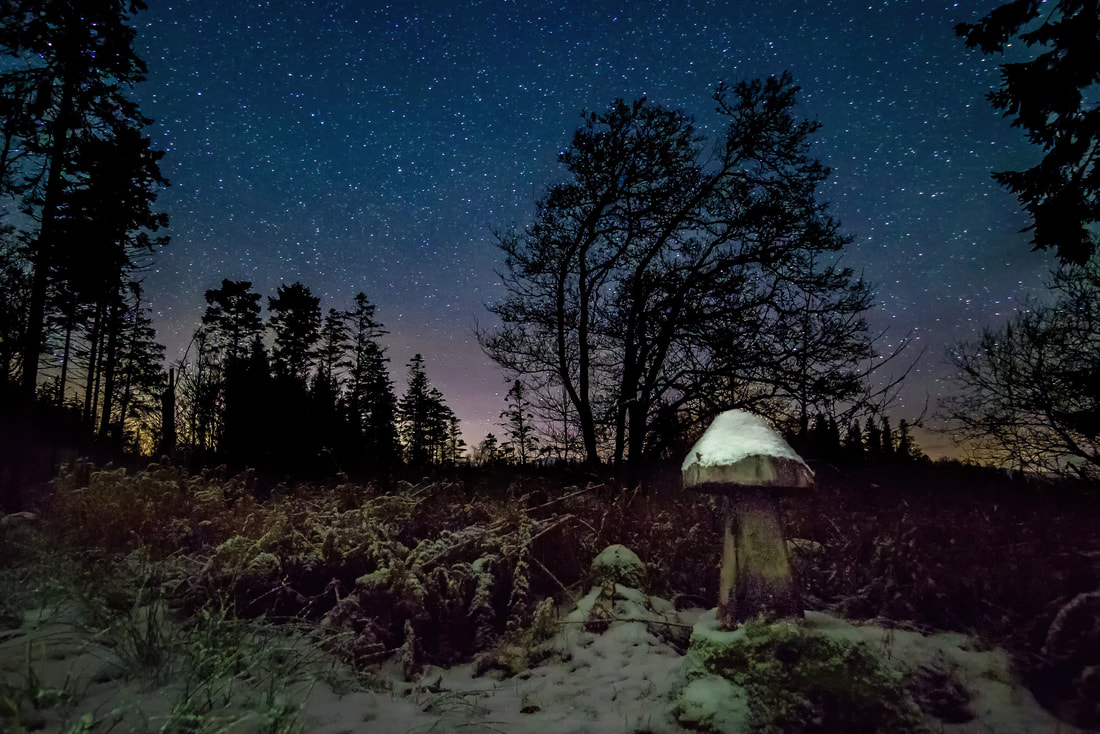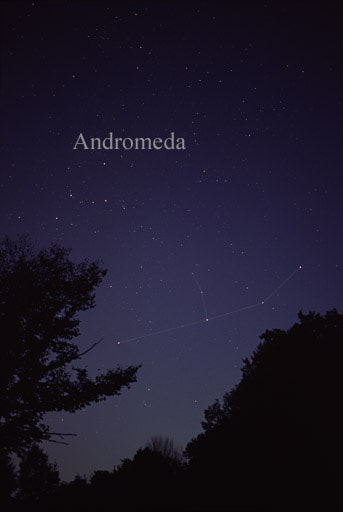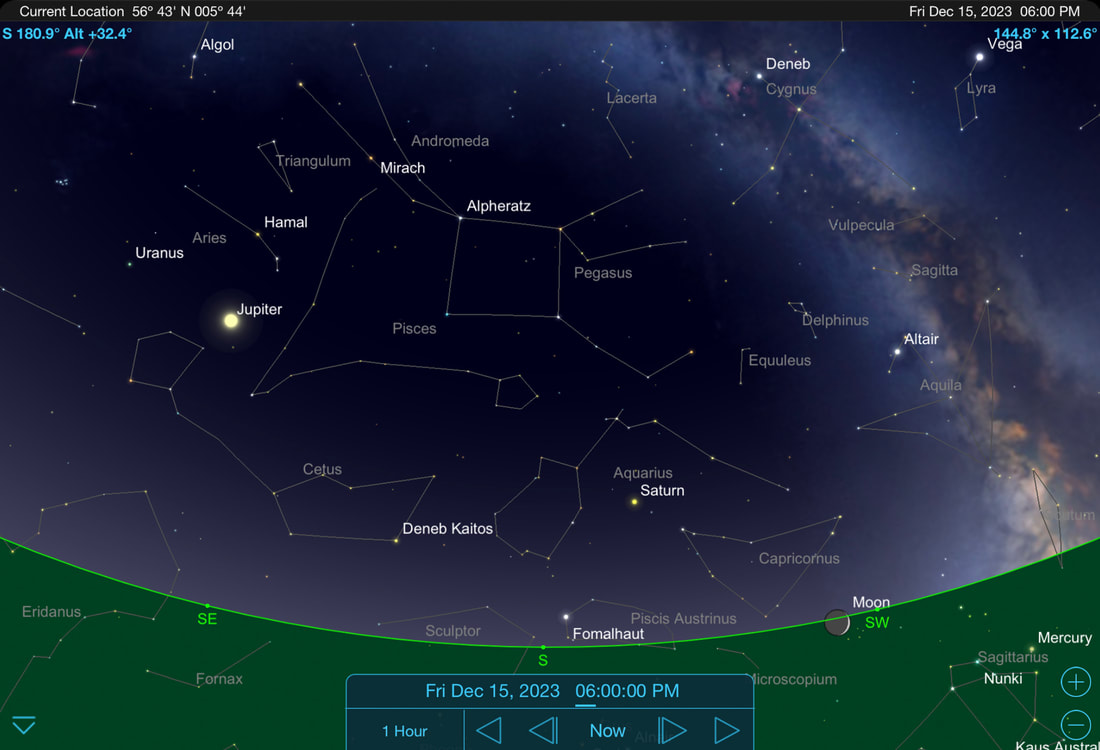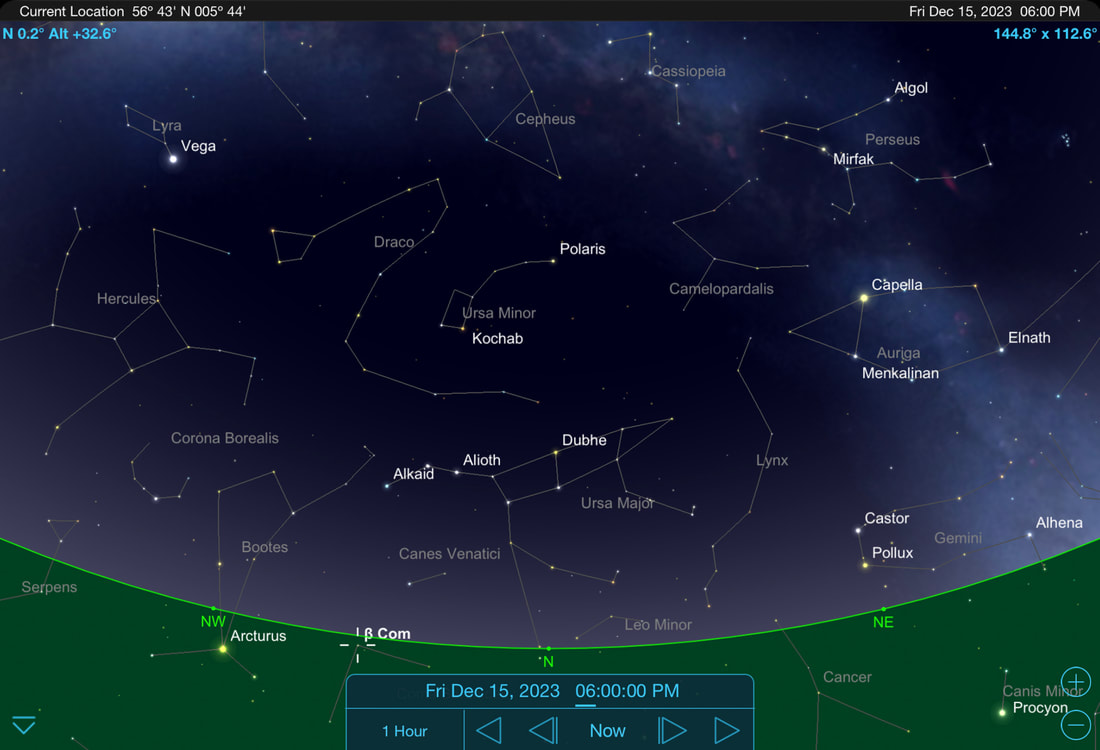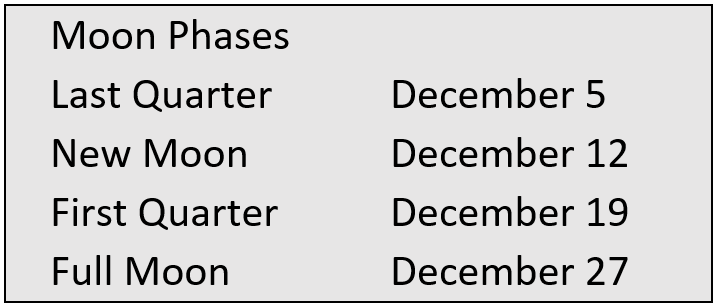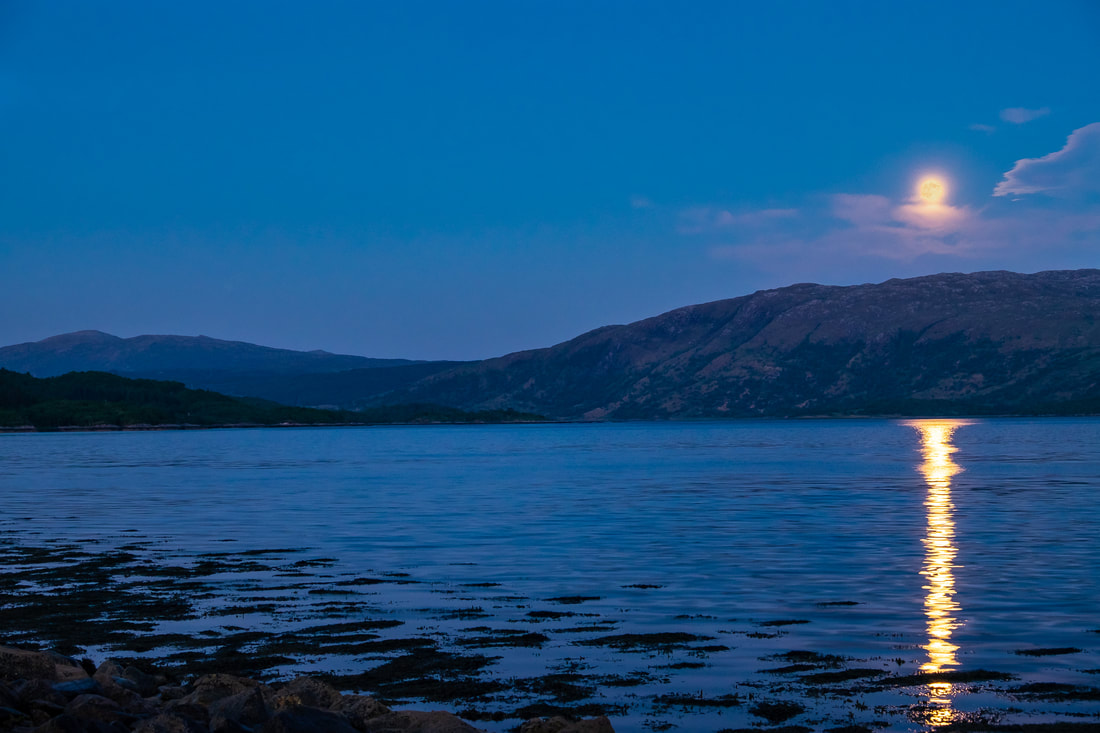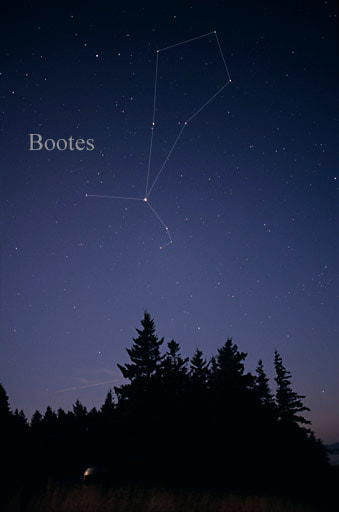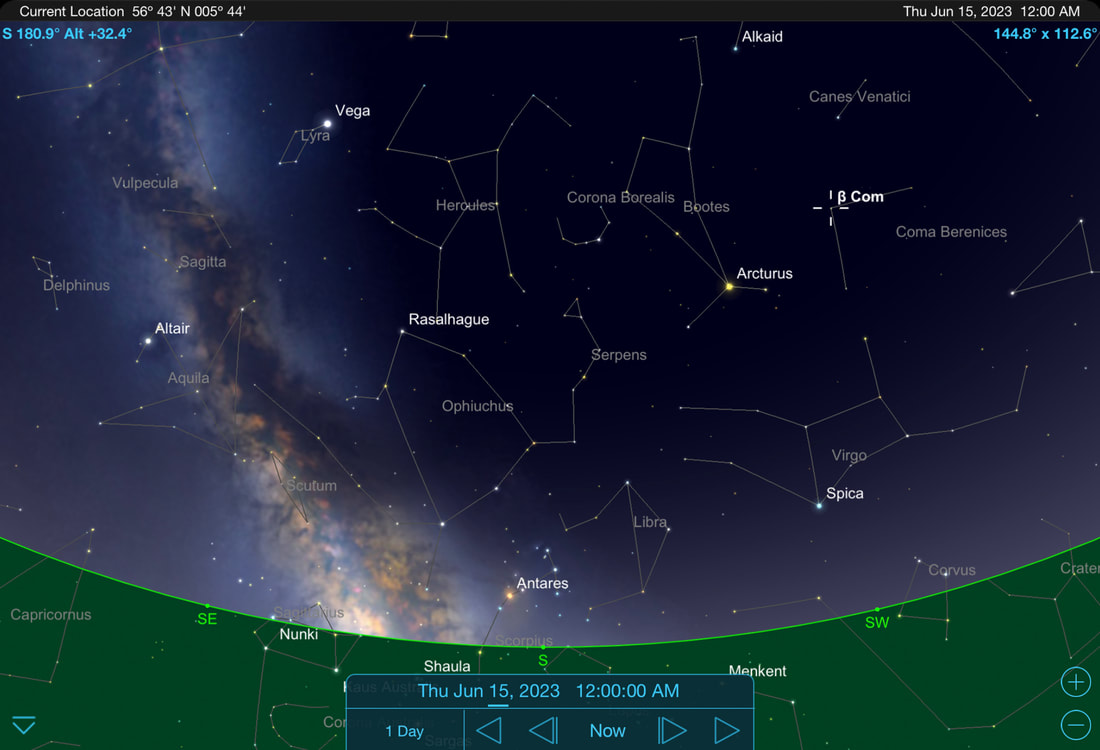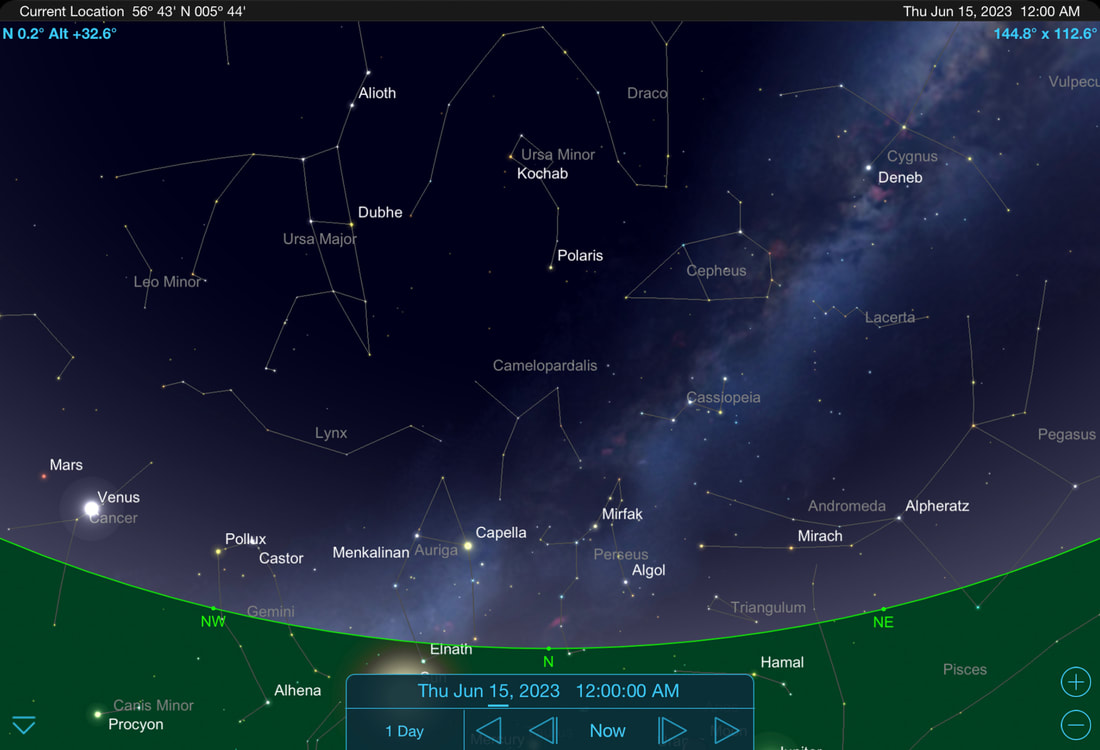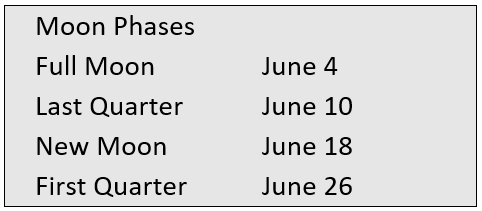|
You don’t have to be out late to go stargazing this month because December is the month of the Winter Solstice and when we have our shortest day with under 7 hours of daylight. Although most of the bright stars are now missing from our sky, it is a good time to spot the Andromeda Galaxy, the closest spiral galaxy to our own galaxy, the Milky Way. All the planets, except for Mars will be visible during the hours of darkness this month and can be spotted with a pair of binoculars or a telescope. Finally, we have the Geminids meteor shower peaking on the morning of 14 December and with no Moon in the sky to spoil the show, it may be possible to see up to 120 meteors an hour, so do look out for them then. The ConstellationsThis month the sun sets around 4:00 pm and the stars and the constellations start to become visible from about 6:00 pm. As with November, there is a great signpost in the form of the Square of Pegasus to help you find your way around the sky. It is a huge square made up of four stars of nearly equal brightness: Scheat, Alpheratz, Markab and Algenib and you should be able to see it high up in the south, above Jupiter in the early evening sky. The top left star of the Square is Alpheratz. It is the brightest star in the constellation of Andromeda, which is marked by a line of three more stars running up and to the left of it. You can use this line to find the Andromeda Galaxy, one of the most famous features of the night sky and the nearest spiral galaxy to our own, the Milky Way. The best way to find it is to start Alpheratz and go a further two stars along the line, turn right and count another two faint stars along, and the Andromeda Galaxy (M31) will be close to the second faint star. If you are in a town, you’ll probably need a pair of binoculars to spot it, but if you’re in a dark place out in the country, you should be able to pick it out without using binoculars.
There will be more about Taurus and Orion next month, but for the moment, draw a line using the three stars in Orion's belt and follow it through Aldebaran and you’ll find the Pleiades star cluster (M45) a bit beyond it. This cluster is the brightest open constellation we can see in the night sky and is a grouping of more than 1,400 stars, seven of which are visible to the naked eye. The name comes from the early Greeks who referred to the constellation as the Pleiades, or the Seven Sisters who were daughters of Atlas and Pleione. These stars are mentioned three times in the Bible and are linked to origin stories for many American Indian tribes. If you look north, you’ll see the same stars as you would in any other month, but their orientation varies from month to month. In December the familiar Plough asterism, which many people recognise, is moving from the north to the north-east. If you follow its two right-hand stars upward and veer a little bit to the right, you’ll find Polaris, the Pole Star. If you look high up over to the north-east, you can see Castor and Pollux, the two brightest stars in the Constellation of Gemini (the Twins), which represent the heads of The Twins. Meanwhile, low down in the North-West, you will find Vega, the brightest star in the Constellation of Lyra (the Lyre). It is the fifth-brightest star in the night sky, and the second-brightest star in the northern celestial hemisphere after Arcturus. The MoonThere was a full Moon on 27 November, so we start the month with an 82% waning gibbous Moon that becomes a last quarter Moon on 5 December. The new Moon (no moon) is on 12 December and a few days before that, on 8 December, you can see a crescent Moon sitting above and to the right of Venus over in the southeast from 3:00 am and until the sun rises at around 8:45 am. You should also be able to see a crescent Moon at daybreak on 9 December, when it will be at its closest to Venus and again on 10 December when it will be below and to the left of the Morning Star. Alternatively, a few days later, on 15 and 16 December, you should be able to pick out the thinnest of crescent Moons sitting low in the southern sky as the Sun sets, while on 17 December the Moon will be very close to Saturn. The Moon becomes 100% full at precisely 0:33 am on 27 December. This means that it will appear full on the nights of 25-26 December, 26-27 December and 27-28 December. It will rise in the northeast at around 2:00 pm on 25 December, at about 2:30 pm on 26 December and at about 3:30 pm on 27 December. This month’s full Moon is called the Cold Moon because December is the first month of winter. Its Old English/Anglo-Saxon name is the Moon Before Yule, while another name for it is the Wolf Moon, however, this is more commonly used for January’s Full Moon. The PlanetsSoon after sunset at the beginning of the month, use binoculars or a telescope to look out for Mercury low down on the southwestern horizon. The innermost planet will be at its greatest separation from the Sun on 4 December, meaning that it will be shining at its brightest. After that, it will fade each night before disappearing in the twilight glow during the second week of the month. As darkness falls, you will also see Saturn sitting above the southern horizon. It will be visible until it sets at around 10:00 pm and if your binoculars or telescope magnify by about 40 or 50 times, you be able to see its famous rings and its biggest moons when you look at it. The largest, Titan, is enormous. In fact, it’s 40% more massive than the planet Mercury and 80% more massive than our own Moon. To the left of Saturn, you will find Neptune. In contrast to Saturn, it will be quite faint, so you will need a telescope to pick this outermost planet in the boundary between Aquarius and Pisces in the southeastern sky. This is because its distance from Earth means that its brightness is half of that of the faintest star you can see with the naked eye. It sets at just after midnight. Next is Jupiter, which you will find it over in the east as darkness falls and it will remain visible until it sets at around 4:30 am. If you look at it through binoculars, you will see some tiny starry objects on either side of it. These are its brightest and largest moons. They are Io, Europa, Ganymede, and Callisto and are known as the Galilean moons and will change position each night as they circle this mighty gas giant planet. If you use a telescope, you will be able to see its roiling clouds and the huge storm known as the Great Red Spot. Uranus lies to the left of Jupiter and does not set until around 6:00 am. You may be able to spot it with the naked eye, but you’ll stand a much better chance of seeing it if you use binoculars or a telescope. In fact, a telescope should reveal its disc and its largest moons. Next up is Venus, rising in the southeastern sky at around 5:00 am and continuing to spend this time of the year as the glorious “Morning Star”. It will be easy to spot because it will be shining much brighter than anything else in the sky except for the Moon. Mars is too close to the Sun to be seen this month. Meteor ShowersDecember is the month for viewing the shooting stars of the Geminids Meteor Shower. Unusually, they are not debris from a comet, but rather debris from an asteroid called Phaethon. The Geminids have become more plentiful in recent years and are considered by many to be the best meteor shower of the year. They are active from 4-17 December and during their peak, which this year is on 14 December, it can be possible to see around 120 meteors per hour. Their radiant point is in the north-east sky, in the Constellation of Gemini (The Twins) and close to Castor, one of its two bright stars. Although this is where they originate from, you’ll be able to see them at any point across the sky as they burn up in the upper atmosphere, some 60 miles (100 km) above Earth’s surface. The best time to look for them is normally when the radiant point is at its highest in the sky, which will be at around 2:00 am. This year, there will be a waxing crescent Moon on 14 December, which sets at 4:30 pm, meaning that it will not illuminate the sky and spoil the show. Winter SolsticeThis year, the Winter Solstice will occur on 22 December at 3:27 am and is the exact moment when the northern hemisphere is tilted furthest away from the Sun. However, many people refer to the Winter Solstice as the Shortest Day of the year, when the number of hours of daylight are at their minimum and the number of hours of night are at their maximum. On 22 December this year, our sunrise will be 8:55:40 am and our sunset will be 3:47:34 pm, giving us only 6 hours, 51 minutes and 54 seconds of daytime.
0 Comments
June is the month of the Summer Solstice and the Longest Day, so night sky never quite gets dark and it’s not the greatest for spotting faint stars. However, there are 2-3 hours when you can spot the Summer Constellations that are up in the southern night sky just now and you can use the four bright stars, Arcturus, Antares, Vega and Spica to find your way around them. Also, Venus dominates the evening sky, playing its part as the Evening Star by shining brightly in the western sky until it sets at around midnight. The ConstellationsThis month, the sun sets around 10:00 pm, so the stars and the constellations start won’t become visible until about 11:30 pm and with sunrise at about 4:30 am, it means that you only have about 2-3 hours to spot them. In fact, it never really gets dark, but it is possible to spot the Summer Constellations that are up in our southern sky just now. Unlike the few big and bright Winter Constellations, these Summer Constellations are more numerous, smaller, and fainter, but you can use four bright stars that are easy to find to navigate your way around them. These stars are Arcturus, Antares, Vega and Spica.
Above Scorpius, you will find Ophiuchus (the Serpent-Bearer). It is a large constellation, which straddles the celestial equator, and it is commonly depicted as a man grasping a snake. This snake is represented by the constellation of Serpens (the Serpent), which is immediately to the west of Ophiuchus. Above Serpens, you’ll find the semi-circular constellation of Corona Borealis (the Northern Crown), which is made up of 4 bright stars that represent the crown of Ariadne, daughter of King Minos in Greek mythology, who helped the hero Theseus kill the Minotaur and find his way out of the labyrinth in which the creature lived. High up in the south-eastern sky, you will find Vega, the brightest star in the constellation of Lyra (the Lyre) and the fifth brightest star in our night sky. Vega acts as the guide star to the Keystone, a rectangle of four stars in the constellation Hercules, the fifth largest constellations in our night sky. To find the Keystone, trace a straight line from Vega and towards Arcturus. You will find it about one third of the way along this line. The Keystone represents the body of Hercules and is home to M13, the Great Global Cluster, a bee-like swarm of a third of a million red giant stars. It is one of the brightest globular clusters and although it is visible to the naked eye, it will be easier to see when using binoculars or a small telescope. The Moon
In Colonial America, this full Moon was referred to as the Strawberry Moon because this was when the red strawberries ripened there. Europeans have dubbed it the rose moon, while other cultures named it the hot moon because it occurred at the beginning of the summer heat. The last quarter Moon (a half-moon) is on 10 June, and on the morning of 14 June, you will find it close to Jupiter. The new Moon (no moon) is on 18 June. This means that a few of days before, on 15 and 16 June, you should see the thinnest of crescent Moons sitting low in the east before sunrise, which will be about 4:30 am. Alternatively, a few days later, on 19 and 20 June, you should be able to pick out the thinnest of crescent Moons sitting low in the western sky as the Sun sets. Then, on the evening of 21 June, a slightly thicker crescent Moon will be higher up in the western sky, sitting above to the right of Venus. The Moon will be higher still on 22 June, having moved above and to the left of Venus and a feint Mars will be in between the two of them. We have a first quarter Moon (a half-moon) on 26 June, and you will find it in the southern western sky, sitting beneath the constellation of Virgo. The following night, on 27 June it will have moved a little to the left to sit very close to Spica. The PlanetsVenus once again dominates the evening sky, and you will see it shining brightly in the western sky as darkness falls. Playing its part as the Evening Star, it sets at around midnight and will be shining far brighter than anything else in the night sky, except for the Moon. It reaches its greatest separation from the Sun on 4 June and on 13 June, it passes very close to the star cluster Praesepe and will be a sight well worth observing through binoculars or a telescope. A considerably fainter Mars will also be seen in the western sky as darkness falls. You will find it slightly to the left of Venus as it follows the Evening Star to drop below the horizon a little after midnight. On 2 June it will appear to lie in the middle of the swarming stars that make up Praesepe, the Beehive Star Cluster. Mars crosses from Cancer into Leo around 21 June, the day of the Summer Solstice when it will also be near to Venus and a crescent Moon. The next planet in the night sky will be Saturn, which rises at around 1:00 am and you will find it very close to the Quarter Moon on 10 June. Neptune will rise in the east at about 1:30 am, while Jupiter will be clearing the horizon at about 3:30 am. This giant planet will be in Aries. The crescent Moon right next to it on the morning of 14 June. Uranus reappears in the morning sky at the end of the month, rising at around 2:30 am but it will be very dim and difficult to see. Mercury is lost in the Sun’s glare this month. Meteor ShowersJune is a not a good month meteor showers because most of them occur when it is daylight just now. We need to wait until the Perseid Meteor Shower in August for our next good show. Radiating from the constellation of Perseus, it will be active between 17 July and 24 August and will peak on the night of 12-13 August. With the new Moon falling on 16 August, it should be a good year for seeing them because the Moon will only be a thin crescent and not too bright, so it won’t affect the show too much. If you do want to look for the Perseids, then they will be at their best on the few hours before dawn on 14 August when the radiant point is at its highest in the sky. Summer SolsticeThis year, the summer solstice occurs on 21 June at 14:58 GMT (15:58 BST) and is the exact moment when the North Pole is at its maximum tilt towards the Sun. However, many people refer to it as the “Longest Day” because it is the day when the number of hours of daylight are at their maximum and the number of hours of night are at their minimum. This is because it is the day when the Sun rises at its closest to north-east, reaches its highest position in the sky at noon and then sets at its closest to north-west. For instance, on 21 June this year, our sunrise here on the Peninsula will be at 4:27:33 am and our sunset will be at 10:22:20 pm, giving us 18 hours, 5 minutes and 13 seconds of daylight. On June 20, our hours of daylight will be 5 seconds less and on June 22 they will be 3 seconds less.
|
Steven Marshall Photography, Rockpool House, Resipole, Strontian, Acharacle, PH36 4HX
Telephone: 01967 431 335 | Mobile: 07585 910 058 | Email: [email protected]
Telephone: 01967 431 335 | Mobile: 07585 910 058 | Email: [email protected]
All Images & Text Copyright © 2024 - Steven Marshall - All Rights Reserved

